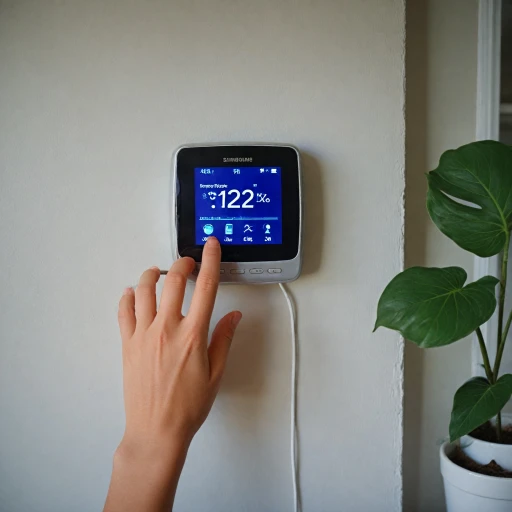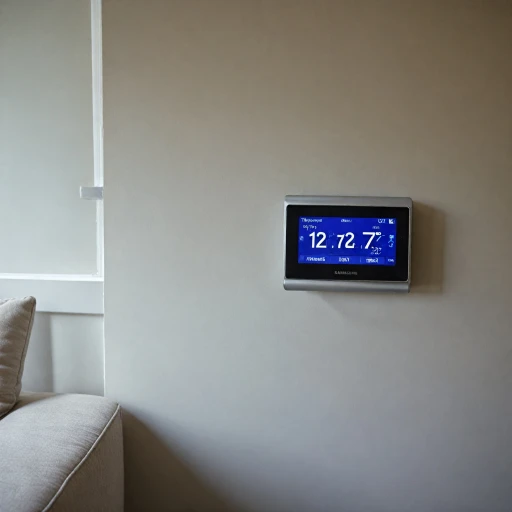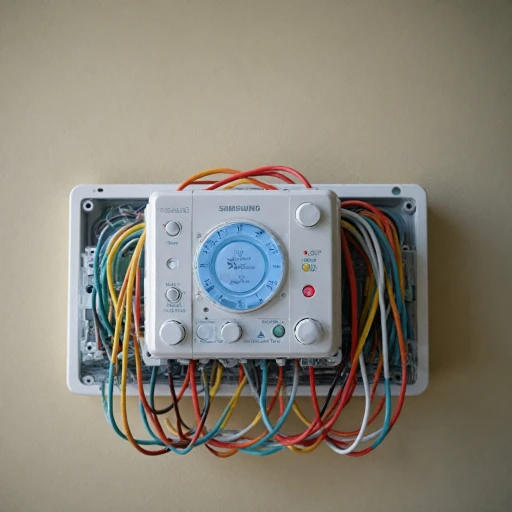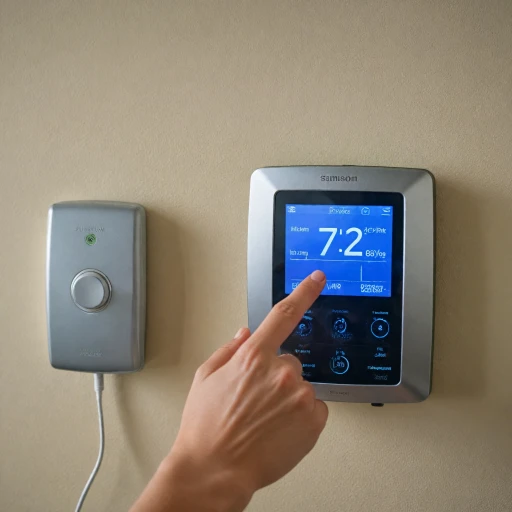
Understanding the C Wire in Thermostats
The Role of the C Wire
When exploring the installation and operation of smart thermostats, like those offered by Nest, understanding the C wire’s function is essential. Essentially, the C wire, or common wire, serves as a dedicated power line for thermostats that require a constant electrical supply from the HVAC system. This wire acts as a return path for the continuous voltage needed to power features like Wi-Fi connectivity and display screens consistently.
Why the C Wire Matters
Without a C wire, smart thermostats may experience power issues. Most traditional heating and cooling systems only supply power when they're actively running, leading to potential connectivity problems or limited functionality when systems are idle. Smart thermostats, like Google Nest and Ecobee Smart, offer advanced features that demand uninterrupted power, making the C wire a critical component.
Older vs. Newer Systems
Typically, older systems may not have a C wire available. However, newer HVAC systems often include it to accommodate modern smart thermostats' demands. Evaluating your system’s wiring can help determine compatibility and ease of installation for devices like the Nest Learning Thermostat.
Tackling the C Wire Problem
For those without an existing C wire, alternative solutions such as power connectors or using the heating system’s G wire in its stead might be available. It’s crucial to ensure that using these methods doesn’t lead to system harm or operational inefficiencies. Always verify compatibility with your HVAC system and consult with a professional if in doubt about which solution is best for your setup.
If you're interested in understanding more about the importance of the common wire in smart thermostats, exploring resources like this guide on smart thermostat benefits can provide further insights.
Nest Thermostats: An Overview
Exploring Nest's Innovative Range of Thermostats
Nest thermostats have become a prominent choice for those seeking the best smart thermostats available today. Renowned for their seamless integration with heating and cooling systems, Nest offers various models that cater to different HVAC setups. These smart enhancements provide users with greater control over their home's climate, enhancing both comfort and energy efficiency.
As part of Google's suite of smart home devices, Nest thermostats utilize advanced algorithms and motion sensors to create a "learning thermostat" experience. This adaptation process helps the thermostat understand your schedule and preferences, allowing for automated adjustments that optimize energy usage. It's a feature that distinguishes the Nest from other smart thermostats on the market, such as those by Ecobee.
When considering the suitable option among Nest thermostats, it's crucial to understand the power requirements, particularly the issue surrounding the C wire or common wire. Models like the Nest Learning Thermostat and the Google Nest Thermostat E are designed to function efficiently with many HVAC systems, which might not have a dedicated C wire. In these cases, the Nest's power connector enables a workaround, ensuring the thermostat receives sufficient power without needing additional wiring.
These innovative systems are also designed to tackle potential problems associated with older wiring setups. Nest thermostats can work with a variety of heaters, furnaces, and other HVAC components by utilizing existing wires and terminals. This compatibility makes Nest a flexible choice for both new installations and retrofits.
For those eager to learn more about thermostat systems, navigating the intricacies of brands like Bryant and Robertshaw may also provide valuable insights into how different thermostats operate in various home environments. To delve deeper into the comparison between these systems and Nest, consider examining the comprehensive guides available online.
Nest Models That Operate Without a C Wire
Compatible Nest Models for Systems Without a Common Wire
For those wondering which Nest thermostat works best without a C wire, the insight begins with understanding that certain models have the capability to operate effectively without the need for this common power wire. This feature offers flexibility in installations where the HVAC system might not have a dedicated common terminal, common in older homes or setups.- Google Nest Thermostat (2020 Release): This model is one of the prominent choices for systems lacking a C wire. By improving efficiency through advanced battery saving techniques and low power consumption, it adapts well without needing an extra wire.
- Nest Learning Thermostat (3rd Generation): This thermostat is renowned for its impressive learning capabilities and can also function in setups that do not have a common wire. Through its power-sharing feature, it draws power directly from the heating or cooling system's wires.
- Google Nest Thermostat E: Another excellent option, the Nest Thermostat E, automatically handles simpler systems without a C wire, while providing an array of smart features for comfortable heating and cooling management.
Installation Tips for Nest Thermostats Without a C Wire
Step-by-step tips for trouble-free Nest installation
If you've decided to install a Nest thermostat without a C wire, you're not alone; many homeowners choose this route due to the straightforward process and cost efficiency. Here’s a look at some practical installation tips:- Identify Your HVAC System: Before beginning, ensure you know whether your heating and cooling system is compatible with Nest thermostats. Most systems are compatible, but it's always good to double-check to avoid potential problems.
- Use the Nest Compatibility Checker: Utilizing Google's online tool can confirm if your specific thermostat model can function without a common wire. This can prevent issues down the line.
- Gather Necessary Tools: A screwdriver and a level are crucial for installation. Some Nest models may require a power connector, which acts as a substitute for the C wire by providing the necessary power to the thermostat.
- Follow User-Friendly Guides: Nest offers step-by-step instructions for installation. Pay attention to how wires should be connected to the thermostat terminals. Many users worried about wires can consult these guides for added clarity.
- Seek Professional Help if Needed: If you're unfamiliar with electrical systems or unwilling to risk damaging your HVAC system, hiring a professional could be your best bet. They can ensure the system is properly wired and functioning.
Benefits of Using a Nest Thermostat Without a C Wire
Advantages of Going C-Wireless with Your Nest
Switching to a Nest thermostat without the need for a C wire brings forth a plethora of benefits that might appeal to many homeowners looking to simplify their HVAC system management.- Ease of Installation: The flexibility of installing a Nest thermostat without a C wire makes it a suitable choice for homes that lack the common wire in their existing thermostat setup. This could save you the hassle and expense of retrofitting your residence with new wiring.
- Cost Efficiency: By eliminating the need for additional wiring, there’s a potential reduction in both setup and future maintenance costs. For people renting their homes or those on a tighter budget, the Nest provides considerable financial advantages.
- Broad Compatibility: Nest thermostats are designed to work well with most heating and cooling systems, be it furnaces, heat pumps, or air conditioners. This adaptability can alleviate some of the integration headaches when upgrading to a smart thermostat.
- Energy Savings: Leveraging Nest’s "learning" capabilities, these thermostats can significantly reduce your energy consumption by adjusting temperatures based on your lifestyle patterns and preferences. This not only benefits the planet but could also lead to noticeable reductions in your utility bills over time.
Potential Drawbacks and Considerations
Limitations of Nest Thermostats Without a Common Wire
Installing a Nest thermostat in heating or cooling systems without a common wire can come with its set of challenges. Understanding these potential drawbacks is key to ensuring the best performance from your smart thermostat.- Power Reliability: A reliable power source is crucial for the seamless operation of any smart thermostat, including a Nest thermostat. Without a common wire, there can be power fluctuations. The thermostat might draw power intermittently from wires like heating or cooling wires, which could potentially cause issues.
- Compatibility Problems: Not all HVAC systems are alike, and this includes differences in how they interact with smart thermostats. In some cases, systems without a common wire might not be fully compatible with a Nest thermostat, potentially complicating the installation process or the thermostat's functionality.
- Potential Short Cycles: The thermostat’s need to intermittently charge via the heating or cooling wires can sometimes lead to scenarios where the system short cycles, affecting heating cooling efficiency and leading to potential wear on HVAC components.
- Installation Complexity: Installing a Nest without a common wire can be more complex than standard installations. Depending on the wiring setup of your furnace or HVAC system, additional components like a Nest Power Connector might be necessary to stabilize power.












